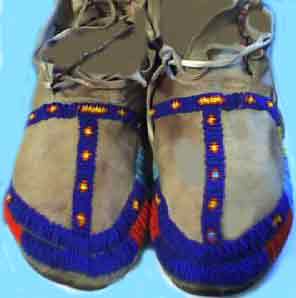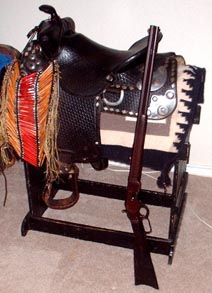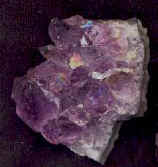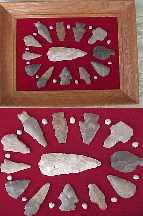   


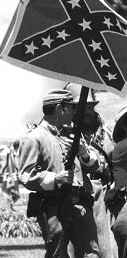

Texas History-French Fort St. Louis (1685)
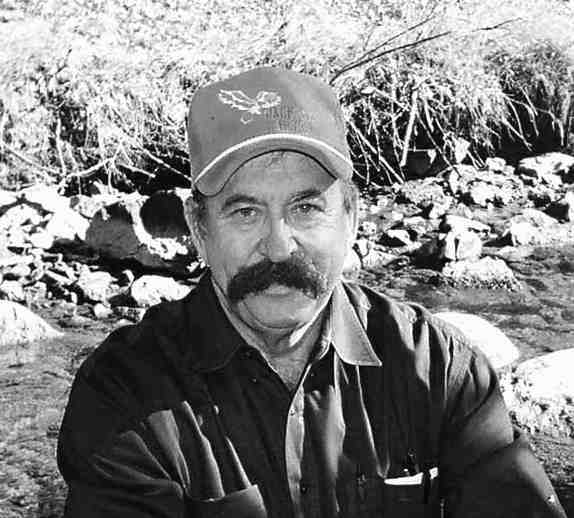
Len Kubiak, Texas Historian and Author
Welcome to our Texas History Series. On this webpage, we provide the history of the French attempt at colonization of America. Under the leadership of the famous French explorer, La Salle in 1685, an attempt was made to establish a French colony at the mouth of the Mississippi River near present day New Orleans. However, due to serious navigational errors, La Salle and his ships found themselves near present-day Matagorda Bay on the Texas coast. Here they built Fort St. Louis which solidified the French claim to North America which they later sold to the United States under the terms of the Louisiana Purchase.
Fort St. Louis, Est. 1685
Explorer La Salle of France set out to establish a colony at the mouth of the Mississippi River to maintain France's claim on the Louisiana Territory.
With support from France's King Louis XIV, La Salle sailed into Matagorda Bay near present day Inez, Texas thinking he was at the mouth of the Mississippi River. La Salle and his men then set about building Fort St. Louis on the west bank of Garcitas Creek.
The colony at Fort St. Louis faced many difficulties during their brief existence, including hostile Native Americans, epidemics, and harsh conditions.
When La Salle realized he was nowhere near the Mississippi River, he led many expeditions in search of the elusive river. However, he did explore much of the Rio Grande and parts of East Texas.
During one of La Salle's absences in 1686, the colony's last ship was wrecked, which meant they could no longer obtasin supplies from the French colonies in the Caribbean Sea. As conditions deteriorated, La Salle realized the colony could only survive with help from French settlements in Illinois Country.
La Salle's last expedition ended along the Brazos River in early 1687 when La Salle and five of his men were murdered by rivals in the group. A handful of men did reach the Illinois colony, but help was not forthcoming for Fort St. Louis. The remaining members of the Fort St. Louis colony were killed or captured during a Karankawa raid in late 1688. Although the colony lasted only three years, its existence established France's claim to possession of the region that is now Texas, and later supported the claim by the United States to the region as part of the Louisiana Purchase.
Spain learned of La Salle's mission in 1686. Concerned that the French colony could threaten Spain's control over New Spain and the southern portion of North America, Spanish authorities funded multiple expeditions to find and eliminate the settlement. The unsuccessful expeditions helped Spain to better understand the geography of the Gulf Coast region. When the Spanish finally discovered the remains of the French settlement in 1689, they buried the cannons and burned the buildings. Years later, Spanish authorities built a presidio at the same location. When the Spanish presidio ceased to exist, the site of the French settlement was forgotten. It was rediscovered in 1996 and the area is now an archaeological site.
In 1721, the Spanish built a fort over the ruins of the failed French colony, Fort St. Louis in 1721. The Spanish Fort, known as
Presidio Nuestra Se�ora de Loreto de la Bah�a, or simply La Bahia was moved to a new location on the Guadalupe River in 1726. In 1747, the presidio and its mission were moved to their current location on the San Antonio River in present day Goliad. By 1770, the presidio had been rebuilt in stone and had become ""the only Spanish fortress for the entire Gulf Coast from the mouth of the Rio Grande to the Mississippi River". A civilian settlement, modern-day Goliad, sprang up around the presidio in the late 18th century, and the area was one of the three most important in Spanish Texas.
The presidio was captured by insurgents twice during the Mexican War of Independence, by the Republican Army of the North in 1813 and by the Long Expedition in 1821. Each time the insurgents were later defeated by Spanish troops. By the end of 1821 Texas became part of the newly formed Republic of Mexico. La Bahia was one of the two major garrisons in Mexican Texas and lay halfway between San Antonio de B�xar (the political center of Texas) and Copano Bay, the major port in Texas. In October 1835, days after the beginning of the Texas Revolution, a group of Texian insurgents marched on La Bahia. After a 30-minute battle, the Mexican garrison surrendered and the Texians gained control of the presidio, which they soon renamed Fort Defiance.
During the siege of the Alamo, Texian commander William B. Travis several times asked La Bahia commander James Fannin to bring reinforcements. Although Fannin and his men attempted a relief mission, they abandoned the attempt the following day. After the fall of the Alamo, General Sam Houston ordered Fannin to abandon La Bahia. He did so on March 19, but took a leisurely path and the La Bahia garrison was captured and imprisoned in the presidio. On March 27 the Texian captives were marched from the presidio and executed, in an event known as the Goliad Massacre.
BIBLIOGRAPHY: DeWitt Clinton Baker, comp., A Texas Scrap-Book (New York: Barnes, 1875; rpt. 1887; facsimile rpt., Austin: Steck, 1935). Joseph H. Barnard, Dr. J. H. Barnard's Journal: A Composite of Known Versions, ed. Hobart Huson (Refugio?, Texas, 1949). Harbert Davenport, James W. Fannin's Part in the Texas Revolution (MS, Harbert Davenport Papers, Barker Texas History Center, University of Texas at Austin). John Crittenden Duval, Early Times in Texas, or the Adventures of Jack Dobell (Austin: Gammel, 1892; new ed., Lincoln: University of Nebraska Press, 1986). Hermann Ehrenberg, Texas und Seine Revolution (Leipzig: Wigand, 1843; abridged trans. by Charlotte Churchill, With Milam and Fannin, Austin: Pemberton Press, 1968). Joseph E. Field, Three Years in Texas (Greenfield and Boston, Massachusetts, 1836; rpt., Austin: Steck, 1935). Henry Stuart Foote, Texas and the Texans (2 vols., Philadelphia: Cowperthwait, 1841; rpt., Austin: Steck, 1935). Charles Adams Gulick, Jr., Harriet Smither, et al., eds., The Papers of Mirabeau Buonaparte Lamar (6 vols., Austin: Texas State Library, 1920-27; rpt., Austin: Pemberton Press, 1968). Hobart Huson, Colonel Fannin's Execution of General Houston's Orders to Evacuate Goliad (MS, Barker Texas History Center, University of Texas at Austin). Hobart Huson, El Copano: Ancient Port of Bexar and La Bahia (Refugio, Texas: Refugio Timely Remarks, 1935). Hobart Huson, Refugio: A Comprehensive History of Refugio County from Aboriginal Times to 1953 (2 vols., Woodsboro, Texas: Rooke Foundation, 1953, 1955). William Kennedy, Texas: The Rise, Progress, and Prospects of the Republic of Texas (London: Hastings, 1841; rpt., Fort Worth: Molyneaux Craftsmen, 1925). John J. Linn, Reminiscences of Fifty Years in Texas (New York: Sadlier, 1883; 2d ed., Austin: Steck, 1935; rpt., Austin: State House, 1986). Abel Morgan, An Account of the Battle of Goliad and Fanning's Massacre (Paducah, Kentucky?, 1847?). Kathryn Stoner O'Connor, The Presidio La Bah�a del Esp�ritu Santo de Z��iga, 1721 to 1846 (Austin: Von Boeckmann-Jones, 1966). Jos� Enrique de la Pe�a, With Santa Anna in Texas (College Station: Texas A&M University Press, 1975). Jakie L. Pruett and Everett B. Cole, Goliad Massacre: A Tragedy of the Texas Revolution (Austin: Eakin Press, 1985). Victor Marion Rose, History of Victoria (Laredo, 1883; rpt., Victoria, Texas: Book Mart, 1961). Antonio L�pez de Santa Anna et al., The Mexican Side of the Texan Revolution, trans. Carlos E. Casta�eda (Dallas: Turner, 1928; 2d ed., Austin: Graphic Ideas, 1970). Ruby C. Smith, "James W. Fannin, Jr., in the Texas Revolution," Southwestern Historical Quarterly 23 (October 1919, January, April 1920). Victoria Advocate, January 3, 1932, 88th Anniversary Number, September 28, 1934. Clarence R. Wharton, Remember Goliad (Houston: McCurdy-Young, 1931). Nell White, Goliad in the Texas Revolution (M.A. thesis, University of Houston, 1941). Dudley Goodall Wooten, ed., A Comprehensive History of Texas (2 vols., Dallas: Scarff, 1898; rpt., Austin: Texas State Historical Association, 1986). Henderson K. Yoakum, History of Texas from Its First Settlement in 1685 to Its Annexation to the United States in 1846 (2 vols., New York: Redfield, 1855).
 For questions or comments, send me an Email For questions or comments, send me an Email
|









 For questions or comments, send me an Email at lenkubiak.geo@yahoo.com
For questions or comments, send me an Email at lenkubiak.geo@yahoo.com




